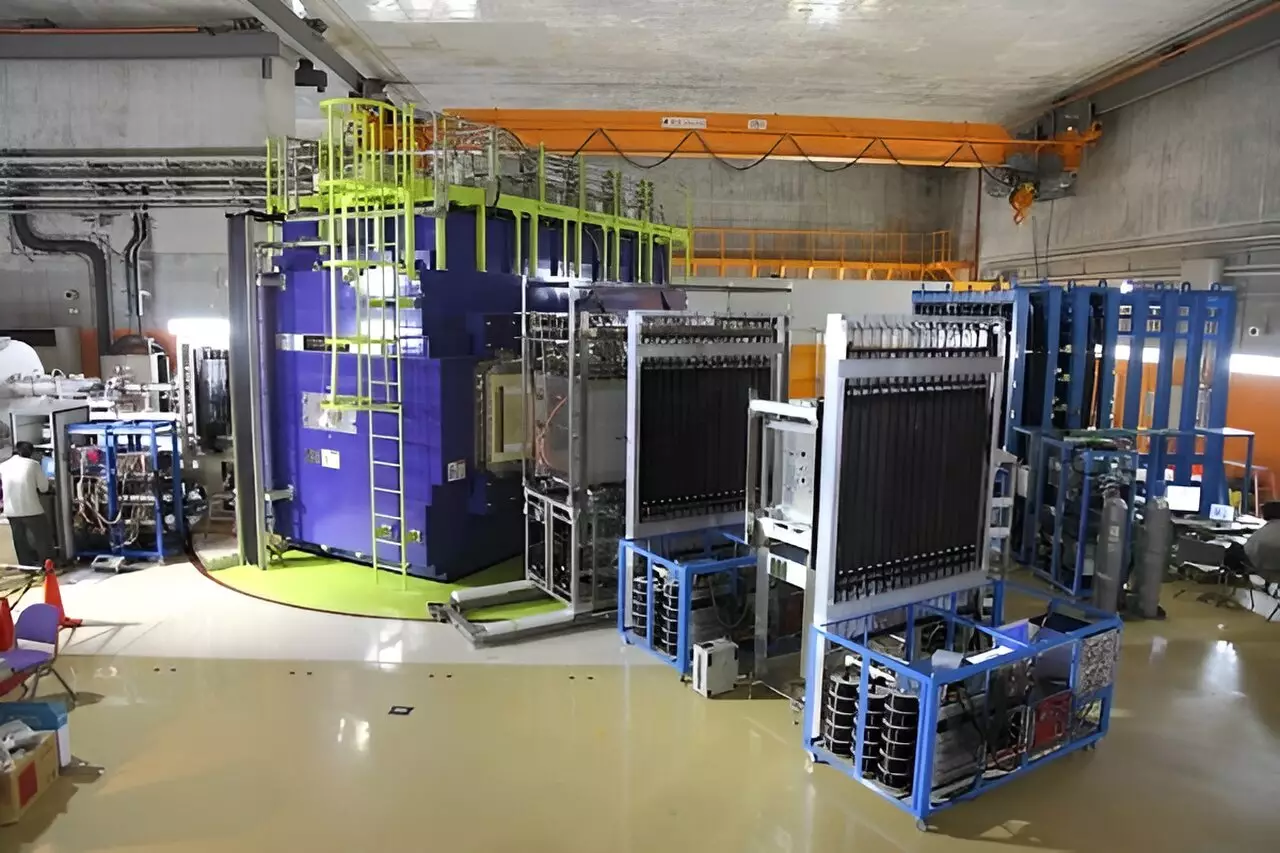In a noteworthy advancement in nuclear physics, the SAMURAI spectrometer at RIKEN’s RI Beam Factory (RIBF) in Japan has unveiled profound insights into the realm of rare isotopes, specifically the fluorine isotope known as 30F. This isotope’s discovery not only enhances our understanding of nuclear structures but also challenges existing theories about nuclear stability and the behavior of neutrons in extreme conditions. The collaborative effort undertaken by a global team of physicists offers a glimpse into the complex interactions within atomic nuclei, setting the stage for further scientific exploration in this poorly understood region of the nuclide chart.
Unraveling the Enigma of 30F
The primary objective of the SAMURAI21-NeuLAND collaboration, involving researchers from RIKEN, Germany’s GSI-FAIR, TU Darmstadt, and other institutions, was to analyze the spectroscopic characteristics and neutron separation energy of 30F. This isotope is particularly unique as it exists only for fleeting moments—approximately 10-20 seconds—making it exceedingly difficult to study. In their groundbreaking research, published in *Physical Review Letters*, the team has suggested the existence of a superfluid state in both 29F and 28O isotopes, which could redefine our understanding of light nuclei.
Julian Kahlbow, a leading author of the study, emphasizes the importance of their findings, stating, “We are exploring the most neutron-rich nuclei on the chart of nuclides, pushing the boundaries of existence.” As the research progresses, it aims to explore the delicate balance of nuclear forces that dictate the stability of isotopes, particularly in light of the challenges posed by “magic numbers” in nuclei.
In nuclear physics, “magic numbers” refer to certain numbers of protons or neutrons that result in a more stable configuration, characterized by sizeable energy gaps. At the neutron number N=20, it is generally believed that such large gaps exist. However, Kahlbow’s team has identified a puzzling phenomenon known as the “Island of Inversion,” where the expected stability of nuclei breaks down. In particular, the study focuses on isotopes such as 29F and 30F, which lie in the precarious zone between traditional neutron-rich nuclei like 28O and the heavy neon isotopes.
The revelation that 30F is unbound, essentially decaying before measurements can be directly taken, posed significant challenges. Instead of straightforward measurements, the researchers opted for an innovative approach by examining the decay products. By analyzing the trajectories and characteristics of 29F and a neutron emitted during 30F’s decay, they could infer key properties of the isotope.
The experiment commenced with the generation of an ion beam composed of 31Ne, fashioned from the RIKEN facility’s advanced BigRIPS fragment separator. This ion beam was directed at a hydrogen target, another critical component of the experimental set-up, enabling the production of 30F through proton knockout interactions. Upon its brief existence, 30F decayed into 29F and a neutron—data which the researchers meticulously collected using a sophisticated 4-ton neutron detector, NeuLAND, provided by GSI-FAIR.
Kahlbow highlights the significance of collaborative effort throughout the project, stating, “This study was a big team effort of 80+ people who collectively ran the experiment…” With diverse expertise converging at a singular point of inquiry, the experiment represents both a technical achievement and a robust example of international scientific collaboration.
The implications of the breakthroughs from the SAMURAI21/NeuLAND collaboration extend well beyond initial discoveries. The researchers propose that the loss of “magicity,” or magic number behavior, might extend to other isotopes in the fluorine family, reshaping long-standing models of nuclear structure. With findings hinting at the potential for a superfluid nuclear phase in 29F and 28O, the implications stretch into theoretical realms not typically associated with light isotopes.
Kahlbow notes, “We speculate that 28O and 29F exist in a superfluid state of nuclear matter.” As exciting as this prospect may be, it presents distinctive challenges and questions regarding neutron pair interactions. The researchers intend to further investigate correlation measurements and the nature of neutron pairs in these isotopes to better understand this complex superfluid state.
The researchers also plan to explore the potential of halo nuclei, which are characterized by neutrons orbiting far from the nuclear core. The understanding of such exotic configurations could provide further insights into the behavior of neutron-rich isotopes throughout the fluorine isotopic chain.
The research conducted by the SAMURAI21/NeuLAND collaboration represents a significant contribution to our understanding of rare isotopes and nuclear physics. As experimental techniques advance and new nuclear phases are theorized, the field stands ready to make remarkable discoveries that may redefine our comprehension of the atomic world. With further exploration on the horizon, scientists anticipate a richer understanding of the structures that constitute the building blocks of matter, potentially opening the door to revolutionary advances in nuclear theory and technology. The exhilarating journey of discovery in the uncharted territories of the chart of nuclides continues to unfold, promising extraordinary revelations about the very fabric of the universe.


Leave a Reply